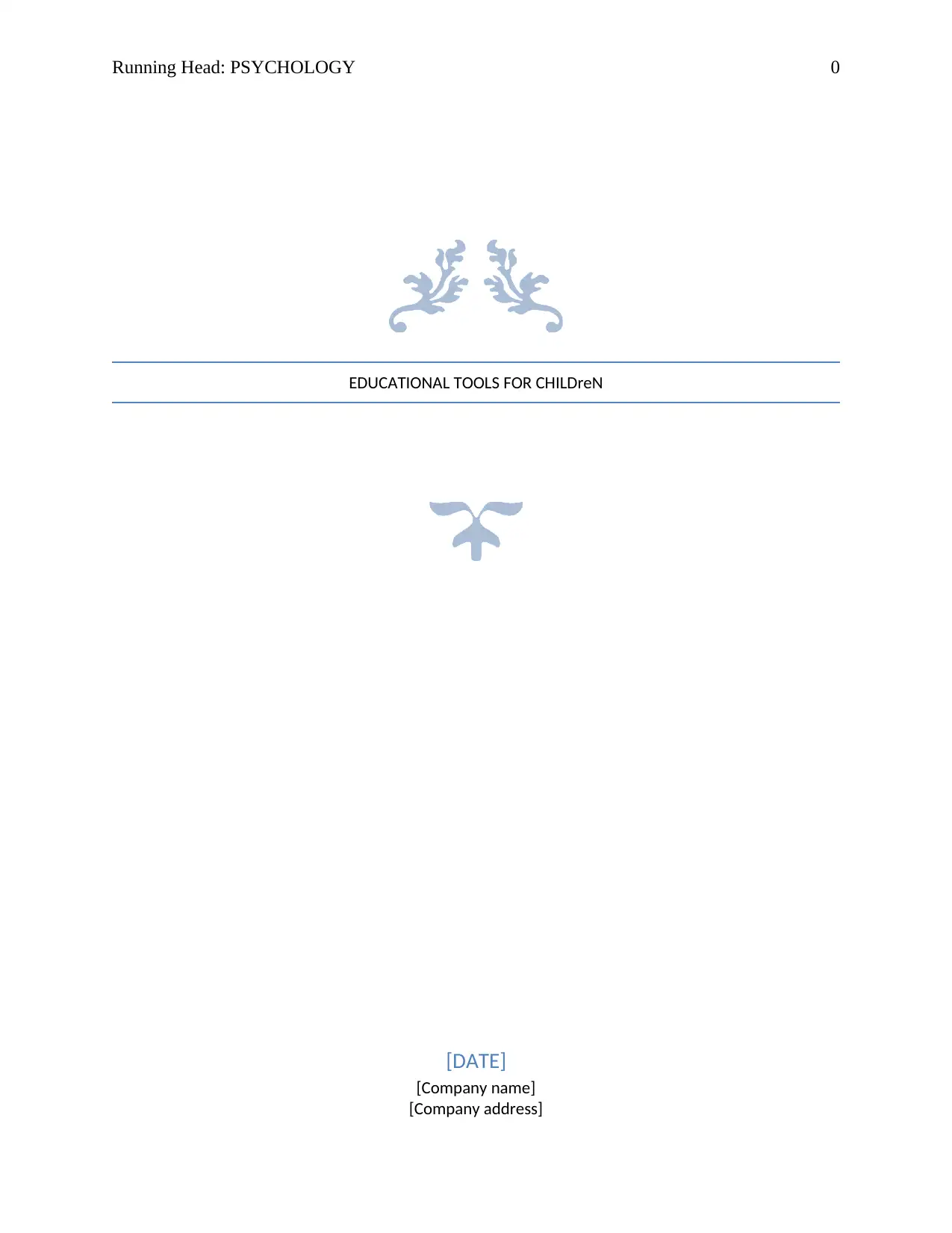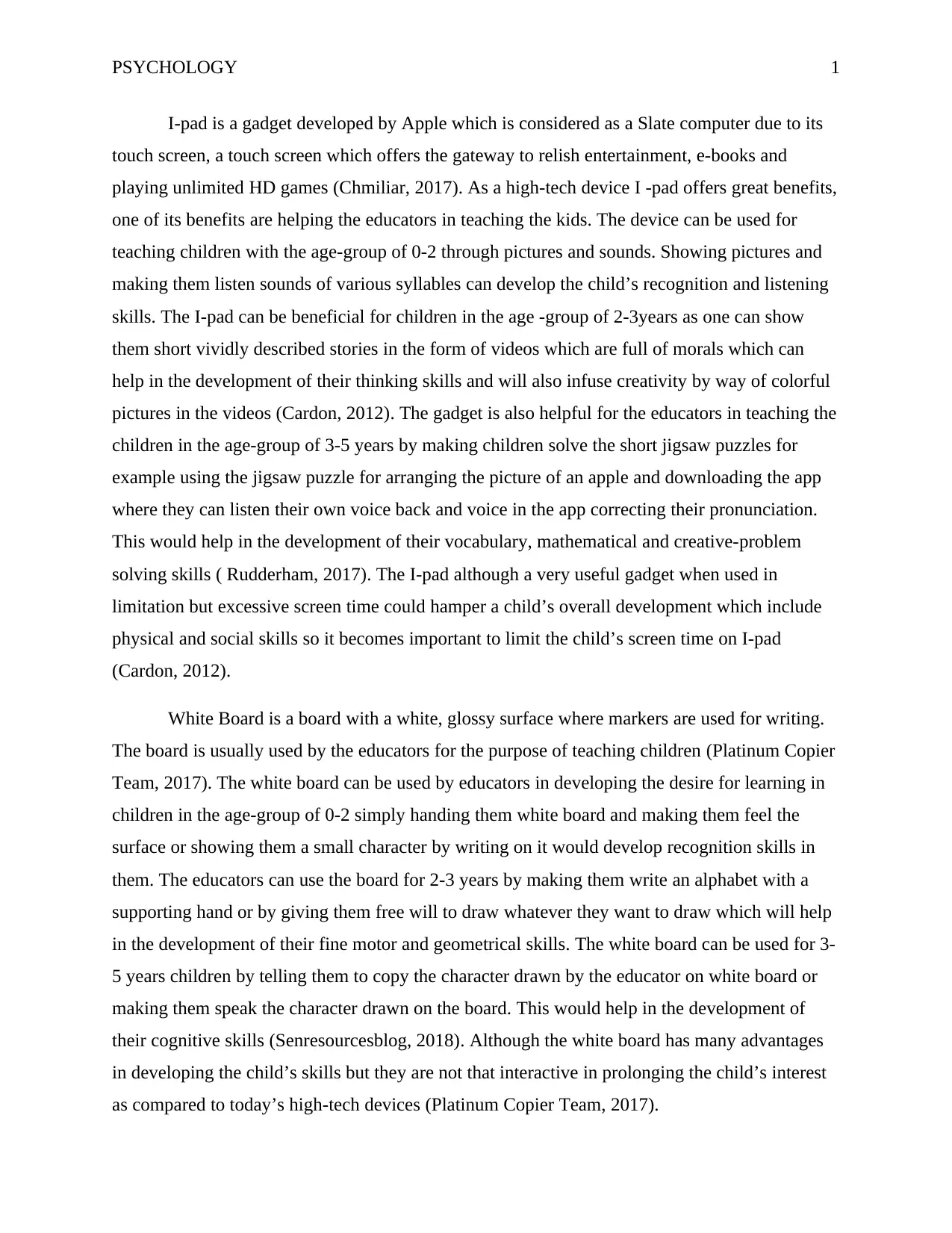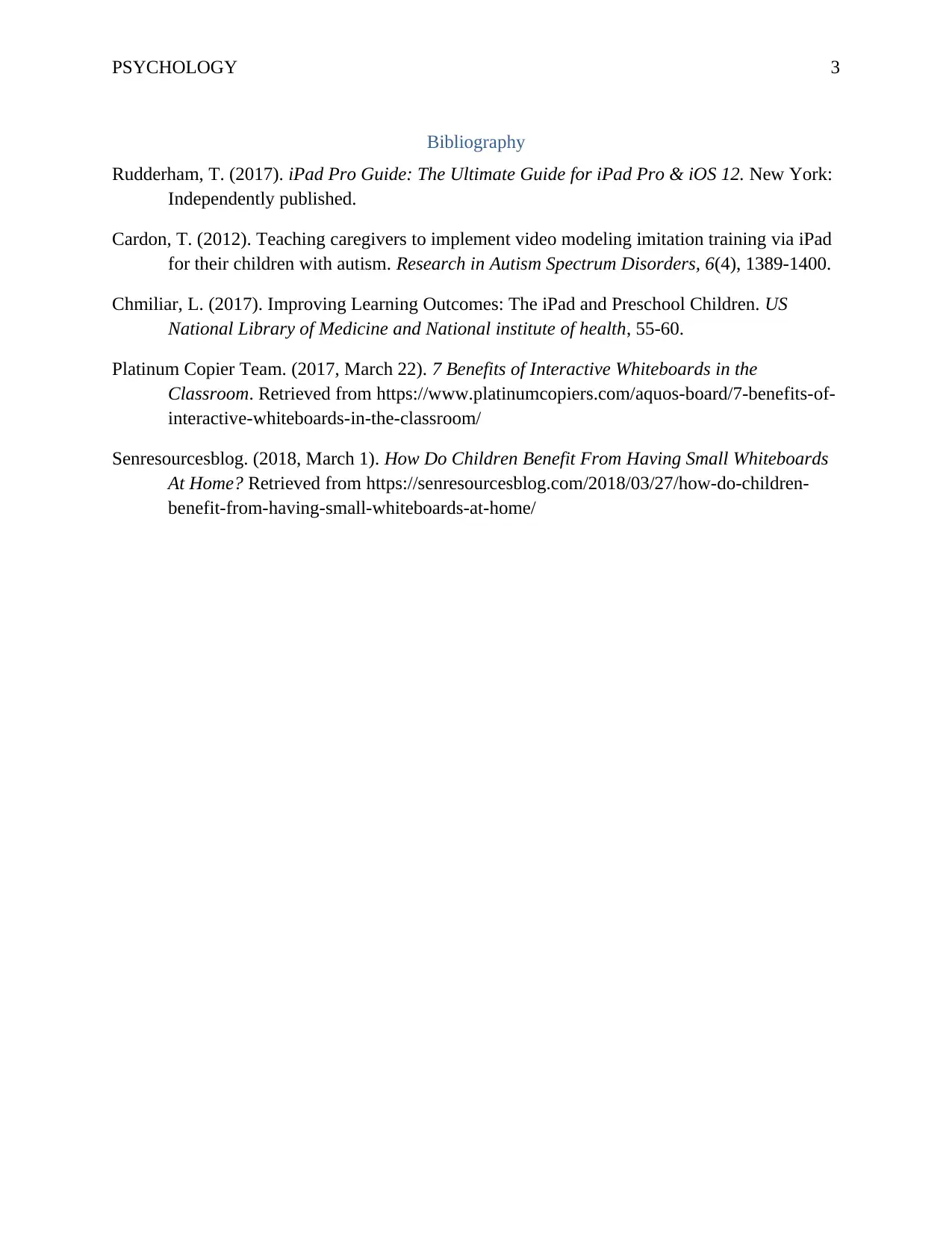PSYCHOLOGY 3: Educational Tools for Children - [Date] - [Company name]
VerifiedAdded on 2022/09/21
|4
|759
|19
Report
AI Summary
This report examines the use of iPads and whiteboards as educational tools for children across different age groups (0-2, 2-3, and 3-5 years). The report begins by defining the iPad as a touch-screen device offering various educational applications, such as picture and sound recognition exercises for infants (0-2 years), short video stories to enhance thinking skills for toddlers (2-3 years), and jigsaw puzzles and voice recording apps to develop vocabulary and problem-solving skills for preschoolers (3-5 years). It also acknowledges the importance of limiting screen time to avoid hindering overall development. The report then defines the whiteboard and how educators can use it for children. The report also discusses how educators can use the whiteboard by letting children feel the surface and draw on it, which develops fine motor and geometrical skills for the age group of 2-3 years, and for the age group of 3-5, educators can tell them to copy the characters drawn on the board, which would help in the development of their cognitive skills. The report concludes by emphasizing the need for educators to use these tools wisely, in an interactive and engaging manner that fosters a child's interest and enjoyment of learning.
1 out of 4











![[object Object]](/_next/static/media/star-bottom.7253800d.svg)